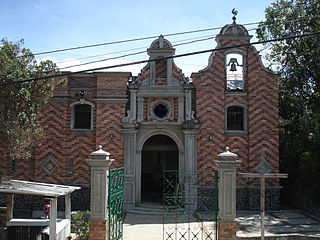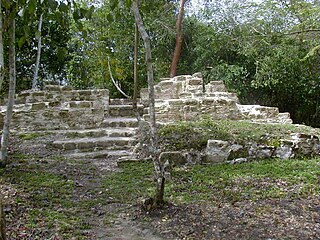
Gerardo Reichel-Dolmatoff was an Austrian anthropologist and archaeologist. He is known for his fieldwork among many different Amerindian cultures such as in the Amazonian tropical rainforests, and also among dozens of other indigenous groups in Colombia in the Caribbean Coast, as well as others living in the Pacific Coast, Llanos Orientales, and in the Andean and inter-Andean regions (Muisca) as well as in other areas of Colombia, and he also did research on campesino societies. For nearly six decades he advanced ethnographic and anthropological studies, as well as archeological research, and as a scholar was a prolific writer and public figure renowned as a staunch defender of indigenous peoples. Reichel-Dolmatoff has worked with other archaeologists and anthropologists such as Marianne Cardale de Schrimpff, Ana María Groot, Gonzalo Correal Urrego and others. He died 17 May 1994 in Colombia.

Villa de Leyva, also called Villa de Leiva, is a touristic colonial town and municipality, in the Ricaurte Province, part of the Boyacá Department of Colombia. The town is a Colombian National Heritage Town and is on the tentative list for UNESCO World Heritage Sites. Villa de Leyva is located 37 kilometres (23 mi) west of the departmental capital Tunja. It is about three hours by car or bus from Bogotá.

A hypogeum or hypogaeum is an underground temple or tomb.

San Agustín is a town and municipality in the southern Colombian Department of Huila. The town is located 227 km away from the capital of the Department, Neiva. Population is around 34,000. The village was founded in 1752 by Alejo Astudillo but attacks by indigenous people destroyed it. The present village was founded in 1790 by Lucas de Herazo y Mendigaña.

Indigenous peoples of Colombia are the ethnic groups who have inhabited Colombia since before the Spanish colonization of Colombia, in the early 16th century.

The San Agustín Archaeological Park is a large archaeological area located near the town of San Agustín in Huila Department in Colombia. The park contains the largest collection of religious monuments and megalithic sculptures in Latin America and is considered the world's largest necropolis. Belonging to San Agustin culture, it was declared a UNESCO World Heritage Site in 1995. The dates of the statues are uncertain, but they are believed to have been carved between 5–400 AD. The origin of the carvers remains a mystery, as the site is largely unexcavated.

El Pilar is an ancient Maya city center located on the Belize-Guatemala border. The site is located 12 kilometres (7.5 mi) north of San Ignacio, Belize and can be accessed through the San Ignacio and Bullet Tree Falls on the Belize River. The name "El Pilar" is Spanish for "watering basin", reflecting the abundance of streams around the site and below its escarpment, which is rare in the Maya area.

Inzá is a town and municipality in the Cauca Department, Colombia. It was part of the San Agustín culture in the Pre-Columbian era, and home to the Tierradentro site. It is mostly inhabited by Paez people.

The contribution of travel and tourism to GDP was US$5,880.3bn in 2016. Tourism generated 556,135 jobs in 2016. Foreign tourist visits were predicted to have risen from 0.6 million in 2007 to 4 million in 2017. Responsible tourism became a peremptory need for Colombia because it minimizes negative social, economic and environmental impacts and makes positive contributions to the conservation of natural and cultural heritage.

The Quimbaya (/kɪmbaɪa/) were a small indigenous group in present-day Colombia noted for their gold work characterized by technical accuracy and detailed designs. The majority of the gold work is made in tumbaga alloy, with 30% copper, which colours the pieces.

Colombian art has 3500 years of history and covers a wide range of media and styles ranging from Spanish Baroque devotional painting to Quimbaya gold craftwork to the "lyrical americanism" of painter Alejandro Obregón (1920–1992). Perhaps the most internationally acclaimed Colombian artist is painter and sculptor Fernando Botero (1932).

The National monuments of Colombia are the set of properties, nature reserves, archaeological sites, historic districts, urban areas and property that, for values of authenticity, originality, aesthetics, and artistic techniques, are representative of Colombia and constitute core elements of its history and culture. The cultural heritage of Colombia includes material and immaterial assets "which are an expression of the Colombian nationality", in accordance with Law No. 1185 (2008). As of December 2011, 1079 National Monuments have been declared. A further sixteen candidate sites have been identified for future declaration.
The World Heritage Earthen Architecture Programme (WHEAP) is a UNESCO initiative promoting earthen architecture founded in 2007 and running till 2017.

Ana María Groot de Mahecha is a Colombian historian, archaeologist, anthropologist and associate professor at the Department of Anthropology of the Universidad Nacional de Colombia. Ana Mariá Groot speaks Spanish, English and French.

The San Agustín culture is one of the ancient Pre-Columbian cultures of Colombia. Its beginnings go back at least to the fourth millennium B.C. Several hundred large monolithic sculptures have been found here.

The pre-Columbian cultures of Colombia refers to the ancient cultures and civilizations that inhabited Colombia before the Spanish Conquest in the 16th century.

The Neiva Regional Archaeological Museum is an archeological museum in Neiva, Colombia. The museum is dedicated to the conservation of the cultural heritage of the Department of Huila. The museum is located in the José Eustasio Rivera Convention Center.

















